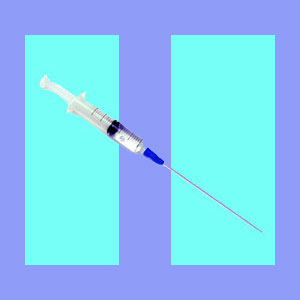
Sciatica epidural injections are a popular form of moderate symptomatic treatment used for a wide range of back and leg pain conditions once more conservative care practices prove futile. Epidural injections are administered directly into the spine in an effort to either temporarily relieve the pain caused by a pinched nerve condition or possibly even resolve the underlying source of the nerve compression or chemical irritation.
This article will examine the various types of sciatica injections and how each is theorized to work. We will also provide details on what patients might expect once they decide to try a particular form of epidural therapy.
Varieties of Sciatica Epidural Injections
The most common type of epidural injection typically consists of cortisone and anesthetic administered directly into the area of the spine thought to be causing the painful complaint. The idea behind this symptomatic sciatica treatment is to deaden the neurological response from a nerve root which is theorized to be compressed or irritated.
Nerve blocks do not do anything to cure the causative condition, but will reduce or eliminate most of the uncomfortable sensations produced in the treated nerve root. While many patients enjoy very positive immediate benefits from this treatment, the effects do not last. Some patients enjoy relief for several weeks to several months, but others only get a symptomatic respite of a few days before the pain begins anew.
Worse still, anesthetic epidurals are notorious for providing progressively shorter and less effective periods of pain relief from each subsequent round of injections.
Alternatives to Epidural Injections
Prolotherapy is a holistic approach to back pain injection therapy, using only all natural substances to irritate organic tissues, thereby stimulating increased healing response. This type of injection is most commonly used to treat non-spinal causes of sciatic nerve discomfort, such as sacroiliac pain, soft tissue injury and piriformis syndrome. Therefore, it is usually not administered into the epidural compartment. This treatment is also commonly called sclerotherapy.
Prolotherapy irritates the natural tissue using materials which cause the body to increase immune response to the affected region. This therapy sometimes helps to relieve symptoms, although it remains highly controversial for treating general back pain and especially radicular pain.
Steroid-Based Sciatica Epidural Injections
Mixtures of steroids, cortisone and flushing solution are typically injected to treat suspected cases of chemical radiculitis. This condition is theorized to occur in some patients with annular tears, who also demonstrate particularly sensitive neurological tissue.
Often a ruptured disc can leak nucleus pulposus proteins, possibly irritating the surrounding nerve roots. This diagnosis remains very controversial, but treatment for the condition continues to expand in scope. These particular injections are given in the hopes of helping the body to remove or nullify the effects of these irritating proteins, thereby eliminating the painful symptoms.
Epidural Injection Opinions
Epidural injections are perhaps the most popular moderate treatment option provided for virtually all varieties of back, neck and sciatica pain, once the more conservative therapy options have proven to be ineffectual.
Epidurals might resolve pain in a tiny percentage of sciatica patients, but are mostly a temporary and symptomatic treatment selection. Patients who do not respond well to epidural therapy are usually advised to consider sciatica surgery as a final option.
Pain management as a medical specialty always made my stomach turn, since these doctors have taken a contraindicated medical practice called symptomatic treatment and turned it into a very lucrative career path. I considered epidural treatments for my back pain many times, but did not like the objective evidence I read in many clinical studies. I gave up on the idea of epidurals once and for all after meeting many patients who suffered serious structural damage, including spinal fluid leaks and permanent nerve injury, after undergoing a series of injections.
If you need immediate relief for extreme pain and are still looking for a cure, then epidural injections for sciatica might be perfect for you. Just remember, they are mostly a temporary fix and eventually, your pain is almost sure to return. In order to provide yourself with the ideal circumstances for enjoying positive treatment results, with fewer complications, be sure to insist that your injections are always administered by a spinal surgeon and only under live x-ray for improved accuracy.
Sciatica > Sciatica Treatment > Sciatica Epidural Injections





